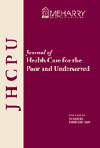 Asthma is a chronic inflammatory disease of the body’s airways. The risk of developing asthma can depend on both genetics and the environment. Once someone has asthma, exposure to certain contaminants can trigger asthma attacks. Air pollutants in both indoor and outdoor environments are known contributors to asthma attacks.1 Examples of asthma triggers in the environment include ozone, nitrogen and sulfur oxides, dust mites, cockroaches, animal dander, tobacco smoke, asbestos, and particulate matter.2-4
Asthma is a chronic inflammatory disease of the body’s airways. The risk of developing asthma can depend on both genetics and the environment. Once someone has asthma, exposure to certain contaminants can trigger asthma attacks. Air pollutants in both indoor and outdoor environments are known contributors to asthma attacks.1 Examples of asthma triggers in the environment include ozone, nitrogen and sulfur oxides, dust mites, cockroaches, animal dander, tobacco smoke, asbestos, and particulate matter.2-4
Asthma is one of the most chronic disorders among children. Nearly 7.1 million children under the age of 18 are affected by asthma.5 A multipurpose health survey conducted by the Centers for Disease Control and Prevention (CDC)’s National Center for Health Statistics (NCHS) reported that non-Hispanic black children were more likely to have ever been diagnosed with asthma (21%) compared to Hispanic (15%) or non-Hispanic white (12%) children. Similar trends were also observed when comparing children from poor families to children from families that were not poor.6
The following are steps you and your patients can take to reduce asthma triggers present in indoor environments:
- Ensure that the heating, ventilation, and air conditioning (HVAC) systems are properly maintained and meet legal standards.
- Dust regularly with a clean damp cloth.
- Prevent mold and mildew by fixing leaks as soon as possible and controlling moisture.
- Avoid using scented candles, artificial fresheners, and fragrance products.
- Never smoke in places used by children, such as in cars.
- Use biodegradable, cleaning, sanitizing, and disinfectant products that are low in toxicity.
- Use integrated pest management (IPM) procedures for pest control. IPM uses techniques that pose the least hazards to people, property, and the environment. It is also cost effective. Learn more about IPM here.
A useful resource for review is the Environmental Management of Asthma: Guidelines for Health Care Providers Asthma, provided by the National Environmental Education Foundation. CDC also offers resources for healthcare professionals.
This is the second in a series of guest posts by Joanne Pérodin, MPH, Program Manager, Children’s Environmental Health Network (CEHN). Feel free to leave a comment. You may contact the author directly at jperodin@cehn.org.
—–
1 U.S. Environmental Protection Agency. (2013). Asthma Facts. Washington, D.C., EPA publication #402-F-04-019. Retrieved November 25, 2013 from http://www.epa.gov/asthma/pdfs/asthma_fact_sheet_en.pdf
2 Etzel, R. (2003). How environmental exposures influence the development and exacerbation of asthma. Pediatrics, 112(1): 233-39.
3 Institute of Medicine. (2000). Clearing the air: asthma and indoor air exposures. Committee on the Assessment of Asthma and Indoor Air, Division of Health Promotion and Disease Prevention, Institute of Medicine. National Academy of Sciences. Washington D.C.: National Academy Press
 Follow
Follow




Follow Us!